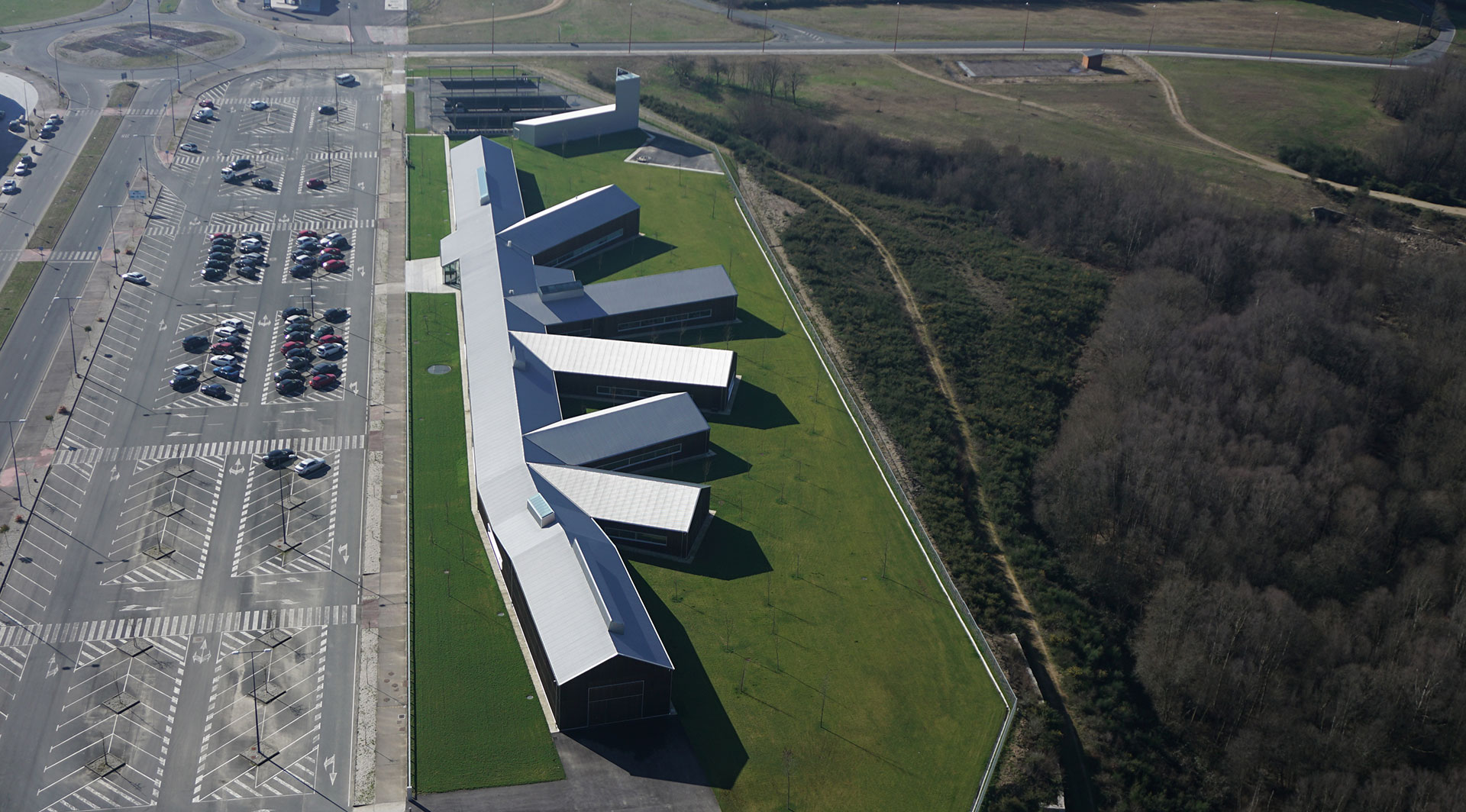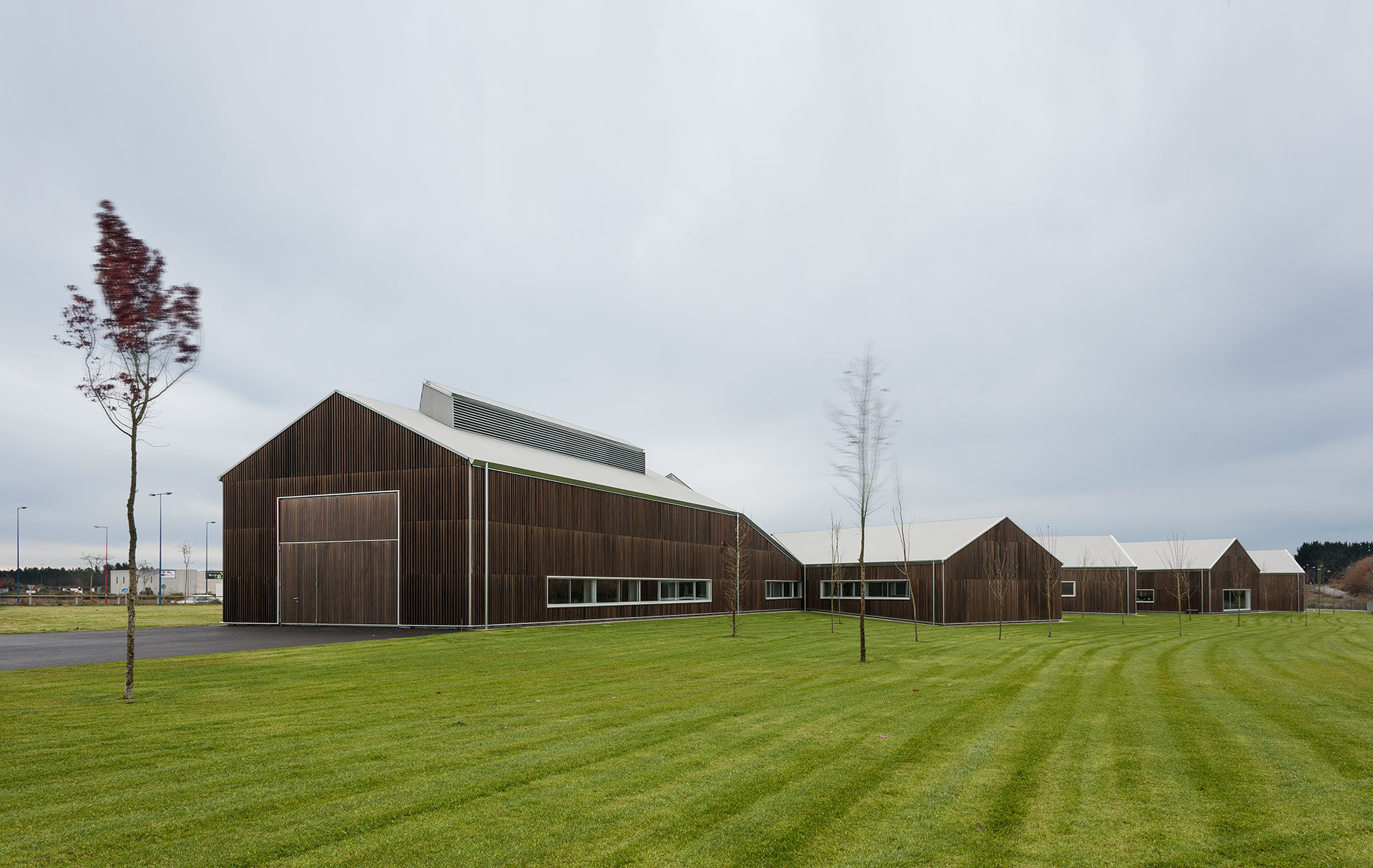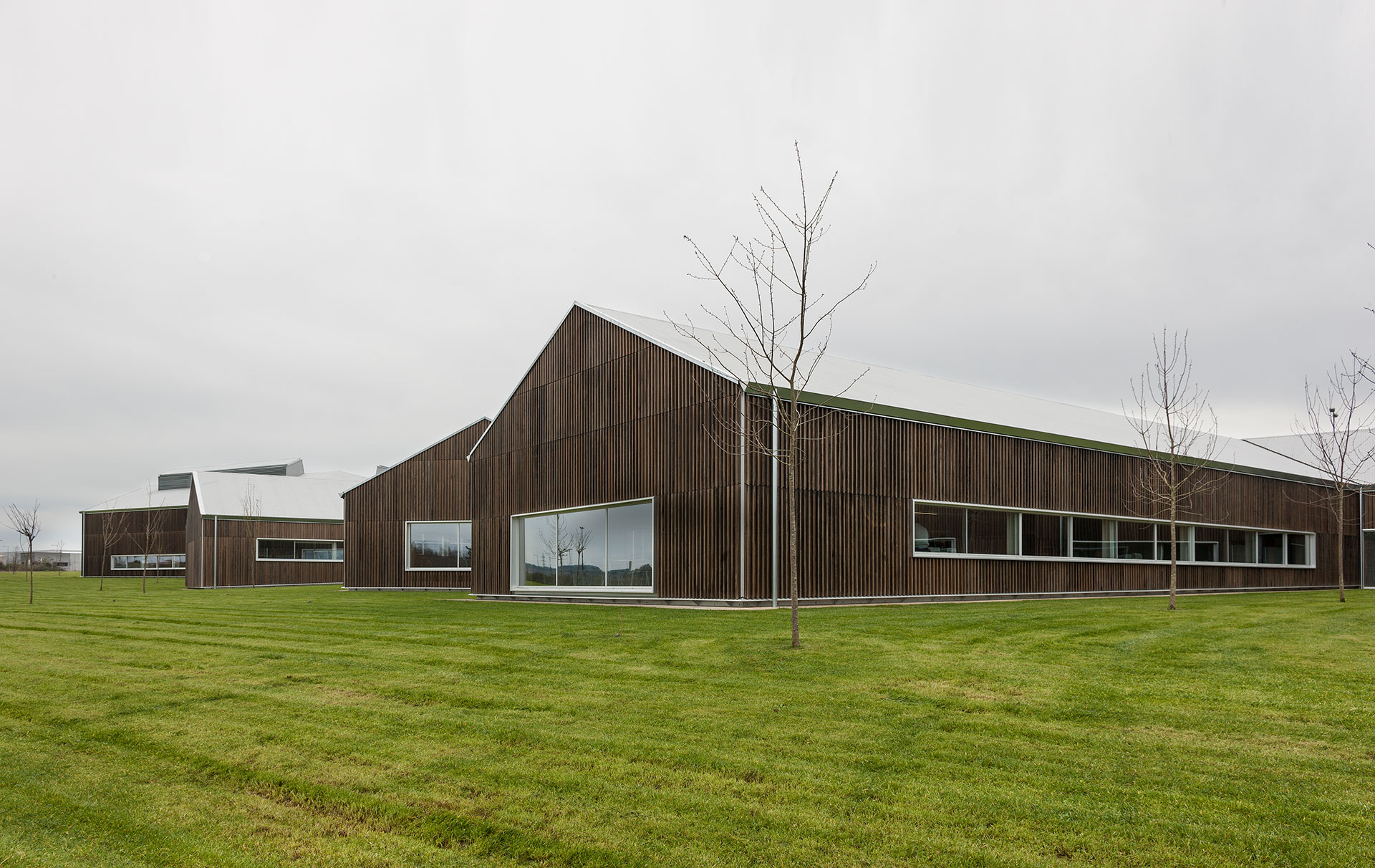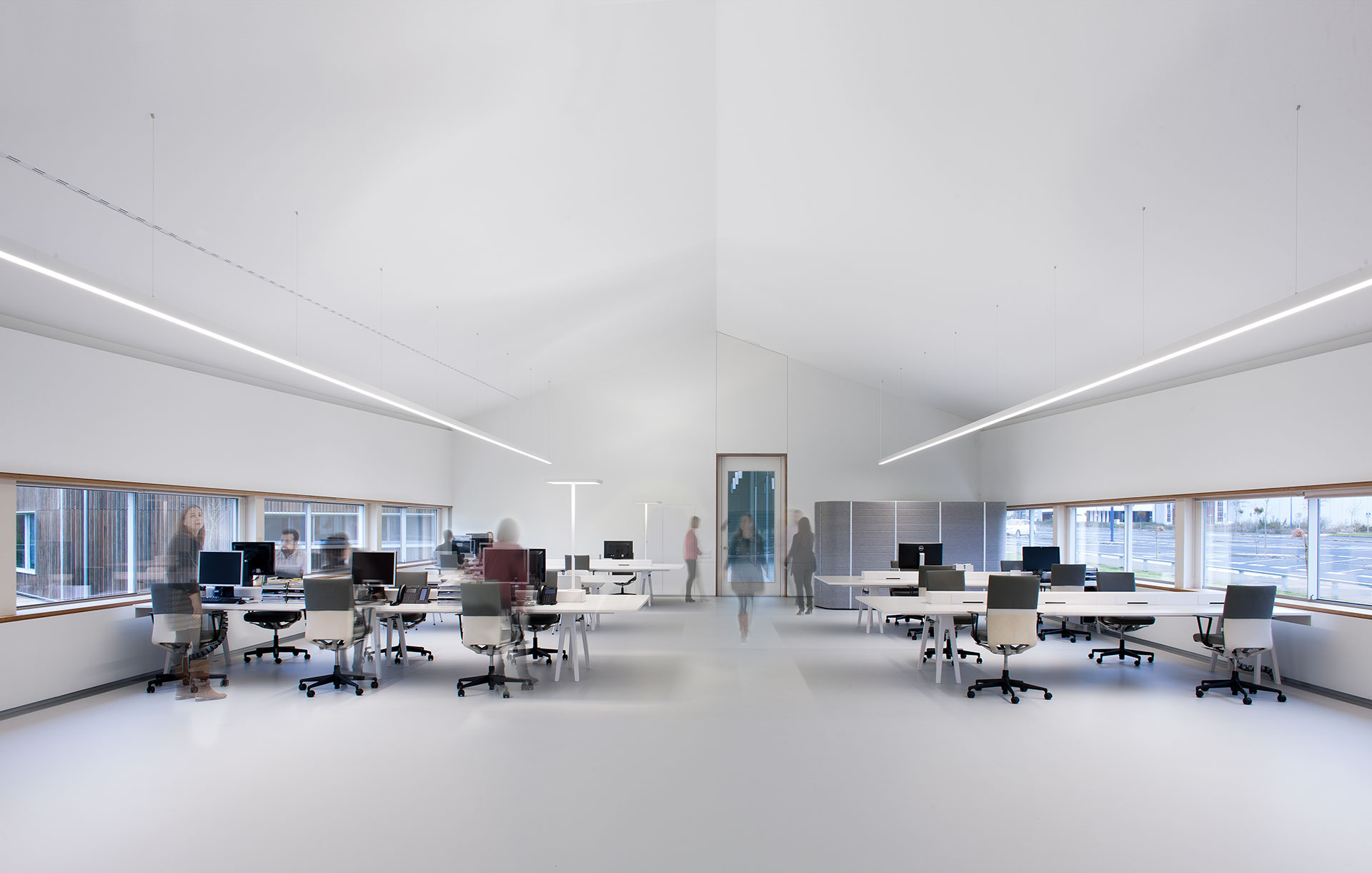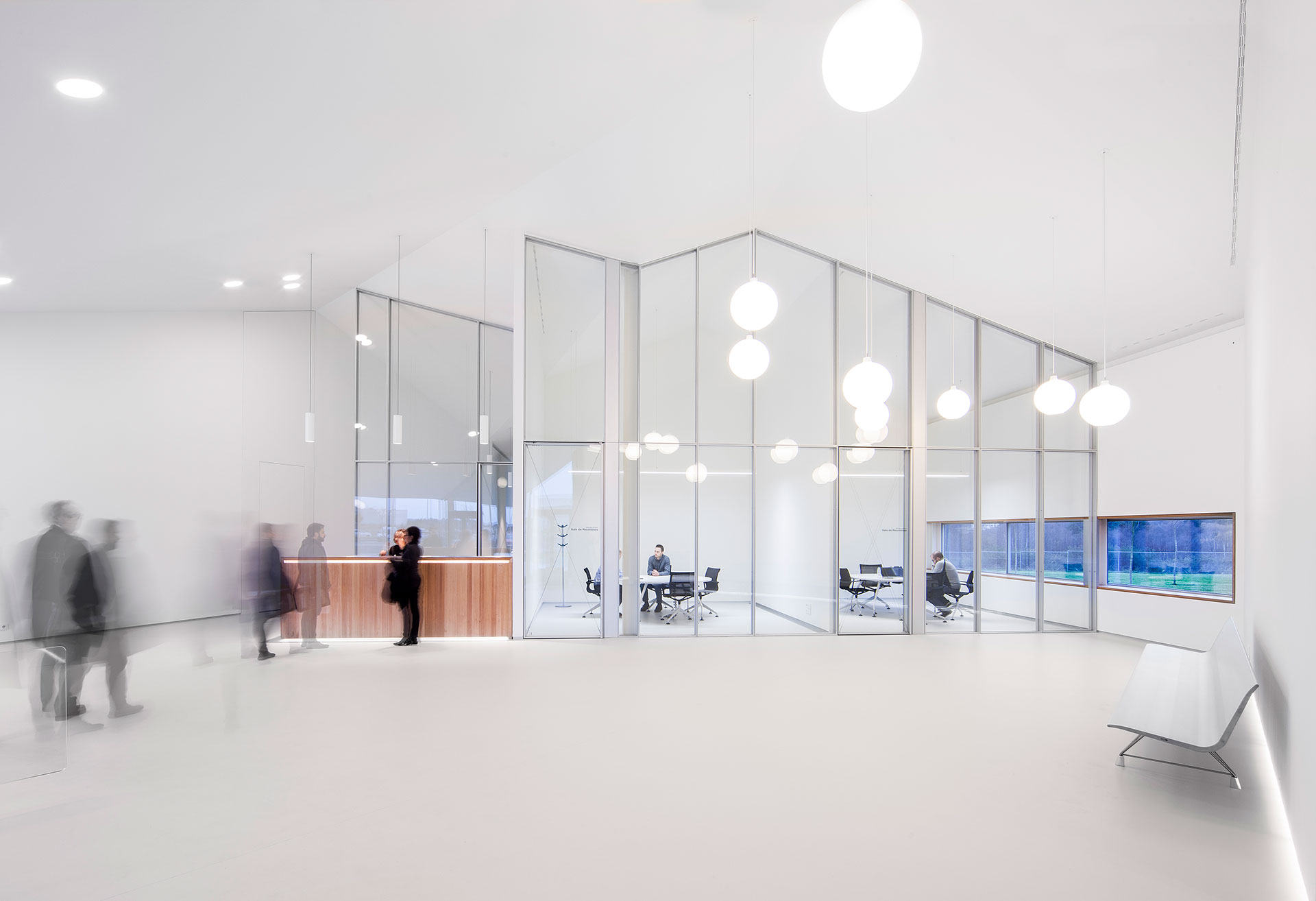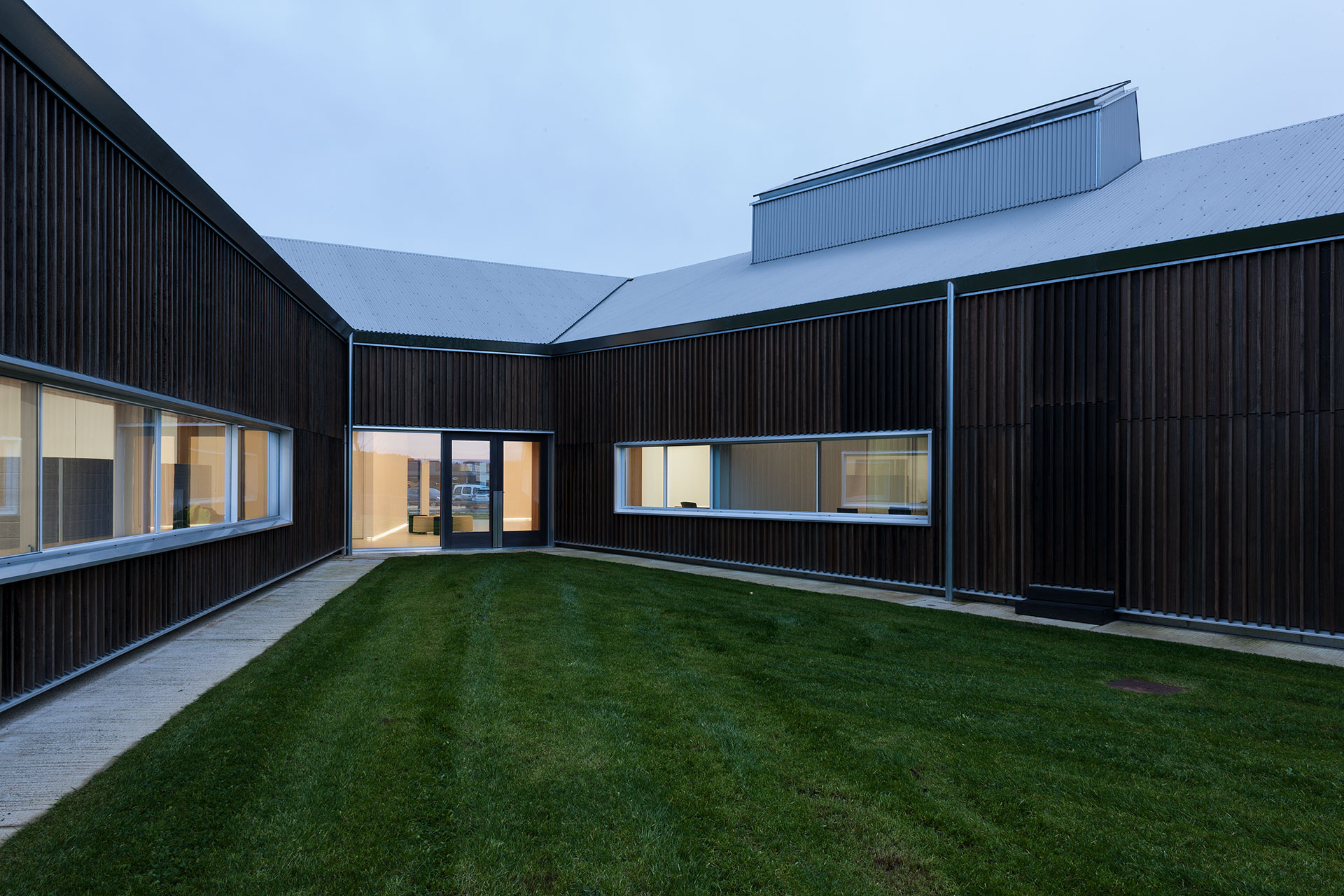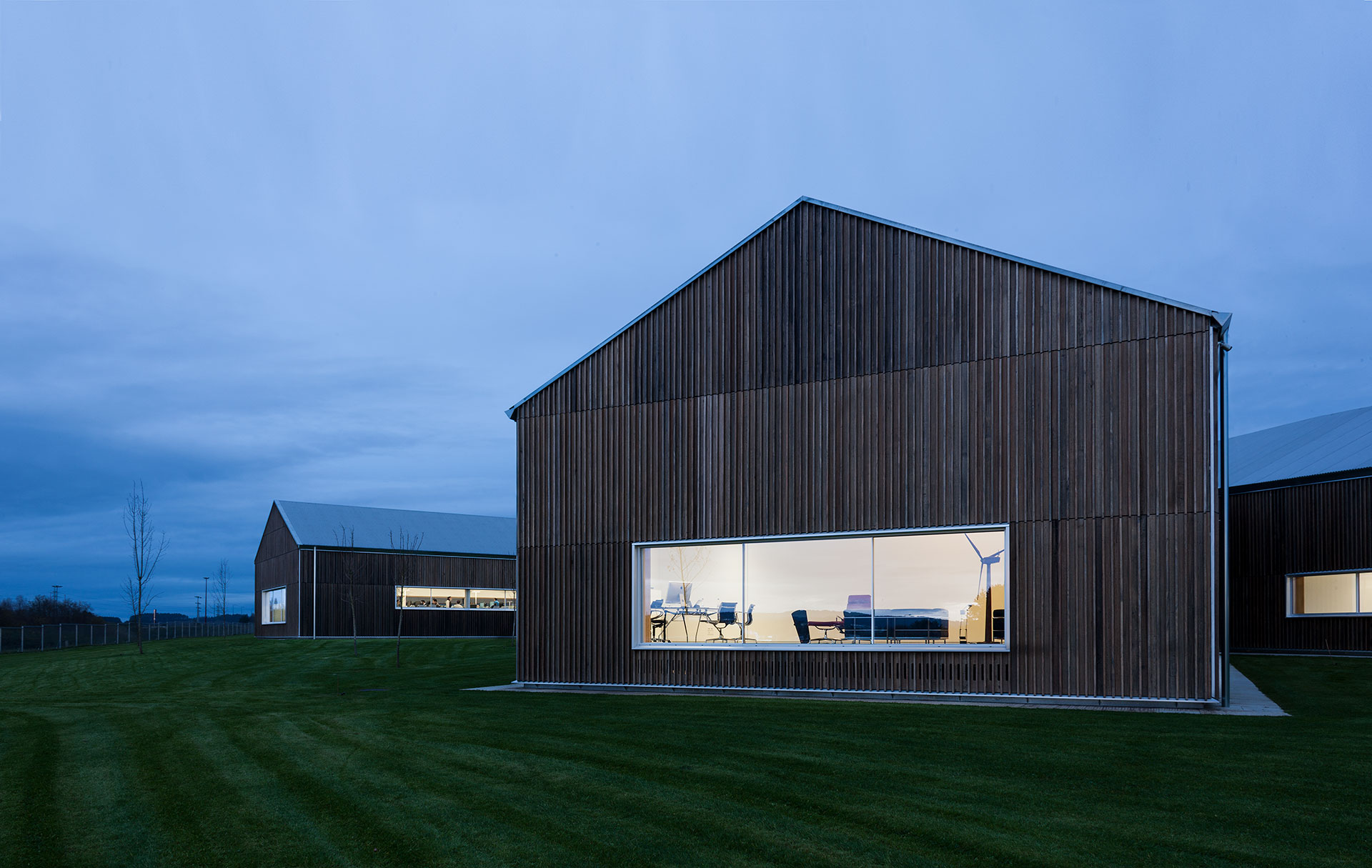Edificio de la Nueva Sede de Norvento
El edificio del centro de investigación de Norvento se encuentra en el límite entre un polígono industrial y un bosque adyacente, junto a la ciudad de Lugo. El proyecto adopta la forma que permite estar abierto y en continuidad con el bosque, aprovechando los valores que éste puede aportar a la arquitectura, a la vez que se cierra hacia el entorno poco interesante del polígono adyacente. De esta manera el problema se convierte, a través de la solución dada, en una oportunidad para ofrecer un esquema claro con pretendidos valores arquitectónicos, tipológicos y espaciales.
El proyecto parte de una reflexión respecto al tipo de oficinas y propone una manera de trabajar e investigar alejado del típico gran edificio anónimo, con despachos todos iguales y espacios poco interesantes. Se busca una cierta “domesticidad” del lugar de trabajo, donde la intimidad y el encuentro sean posibles. Un lugar que no esté definido y delimitado sino que de alguna manera se reinventa cada día mediante la interacción con el usuario. La organización de la planta en cuerpos que se prolongan e integran en el parque posibilita igualmente una estructuración de cada departamento de manera diferenciada y autónoma, haciendo que los programas puedan verse ampliados en el futuro tal y como se mencionaba en las bases del concurso.
Otro objetivo esencial del proyecto ha sido construir una forma sencilla y lógica de manera que resulte sutil pero clara. Buscamos una imagen fácilmente reconocible con la que resulta fácil identificarse, alejada de la que habitualmente asociamos a la mayoría de los edificios de oficinas impersonales. La arquitectura resulta en este sentido coherente con la actitud de la misma empresa de Norvento.
La elección de la sección a dos aguas, muy común y de evidente carácter “doméstico” traslada los objetivos referidos a la realidad construida. La “cabaña” construida resulta útil en la medida que se adapta muy bien a los distintos requerimientos del programa. Su altura va variando según las necesidades generando el perfil longitudinal, variado y rico visualmente, del conjunto. Pero esta sección va más allá de la visión estrictamente formal recordándonos la esencia misma de la geografía gallega en donde el agua de lluvia y el bosque siempre están presentes.
El interior procura el equilibrio entre la sencillez y la sorpresa. La organización de los cuerpos en planta, que no es ortogonal, genera a su vez ricas geometrías interiores especialmente en los puntos de encuentro, geometrías que cualifican sin duda los espacios. La luz es importante. Siempre proponemos divisiones de vidrio al objeto de que la luz se traslade al interior o, allí donde sea necesario, se recurre a lucernarios que provean de luz a este interior.
Muchos son los argumentos que juegan a favor del compromiso de este edificio con el medio ambiente especialmente si tenemos en cuenta que la actividad fundamental de Norvento está fundamentada en la investigación en este campo. La lógica y la sencillez como principios son sin duda básicos. Pero en lo que a la materialización se refiere es importantísimo el uso de la madera de eucalipto, en todas la fachadas. Esta madera, muy común en Galicia, pero denostada y habitualmente utilizada para la fabricación de pasta de papel, ha sido utilizada tras haber desarrollado un “pliego de condiciones” específico respecto a cómo aplicarla en la construcción. Con ello no solo se han desarrollado sus magníficas posibilidades técnicas sino que se ha abierto un posible desarrollo futuro en lo que a la explotación del eucalipto como gran riqueza forestal en Galicia se refiere.
El edificio es autónomo energéticamente y no está conectado a la red.
Ciudad
Lugo
País
España
